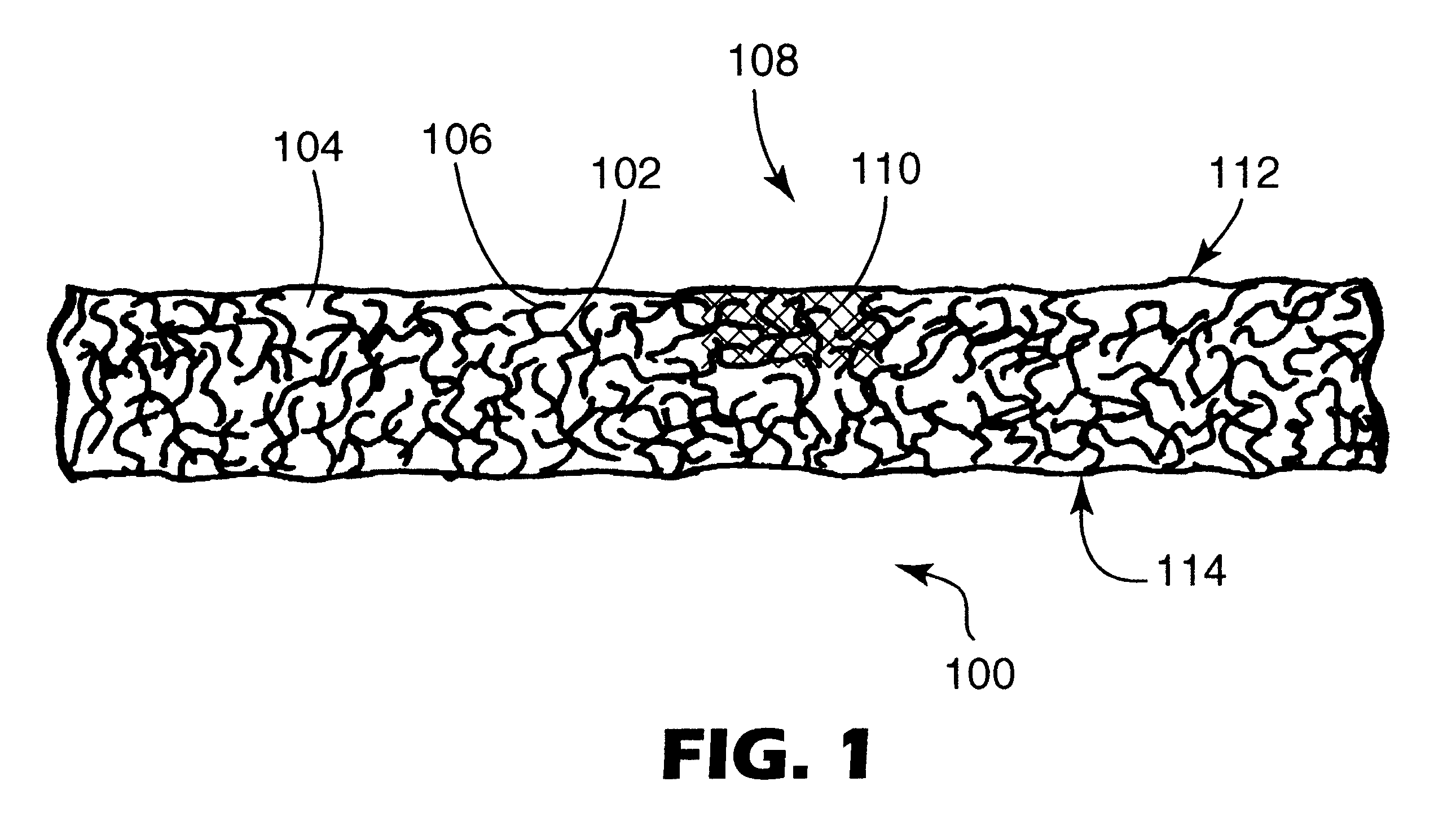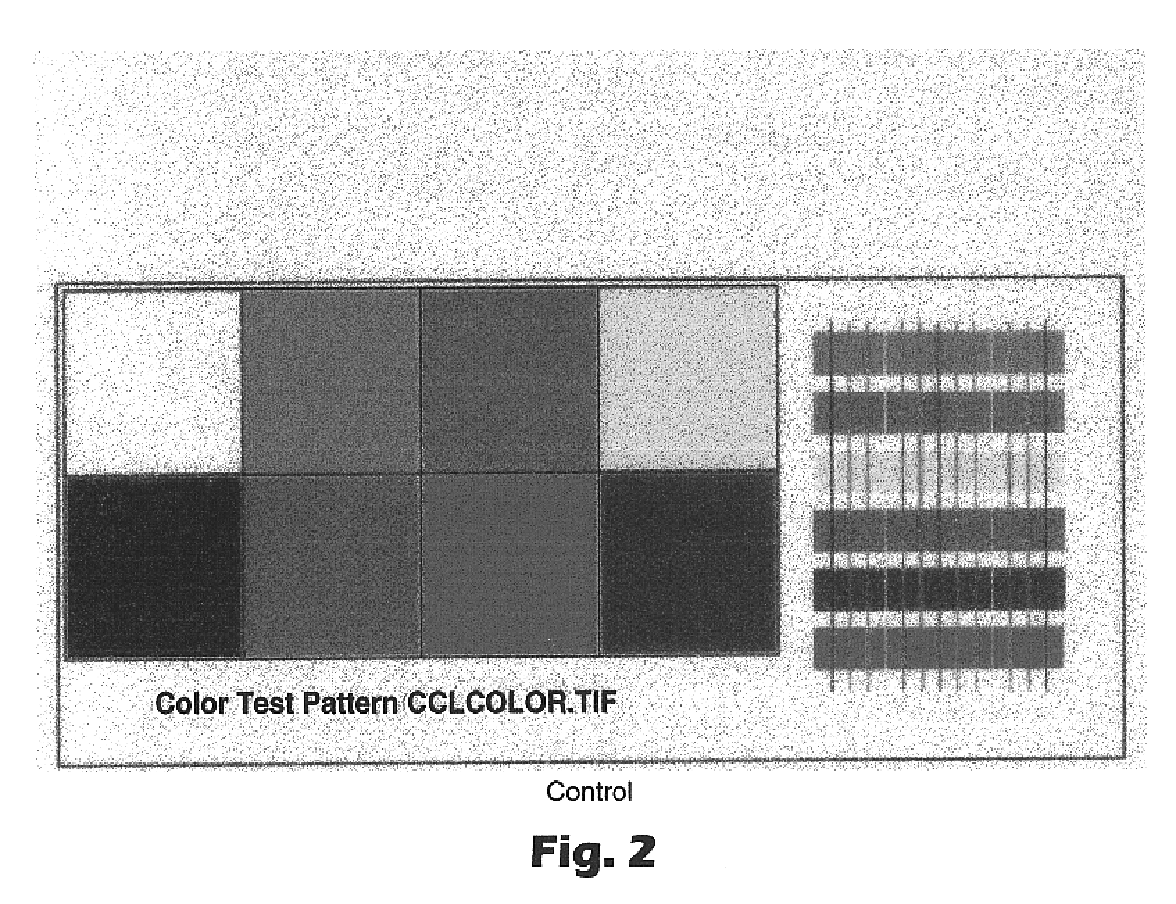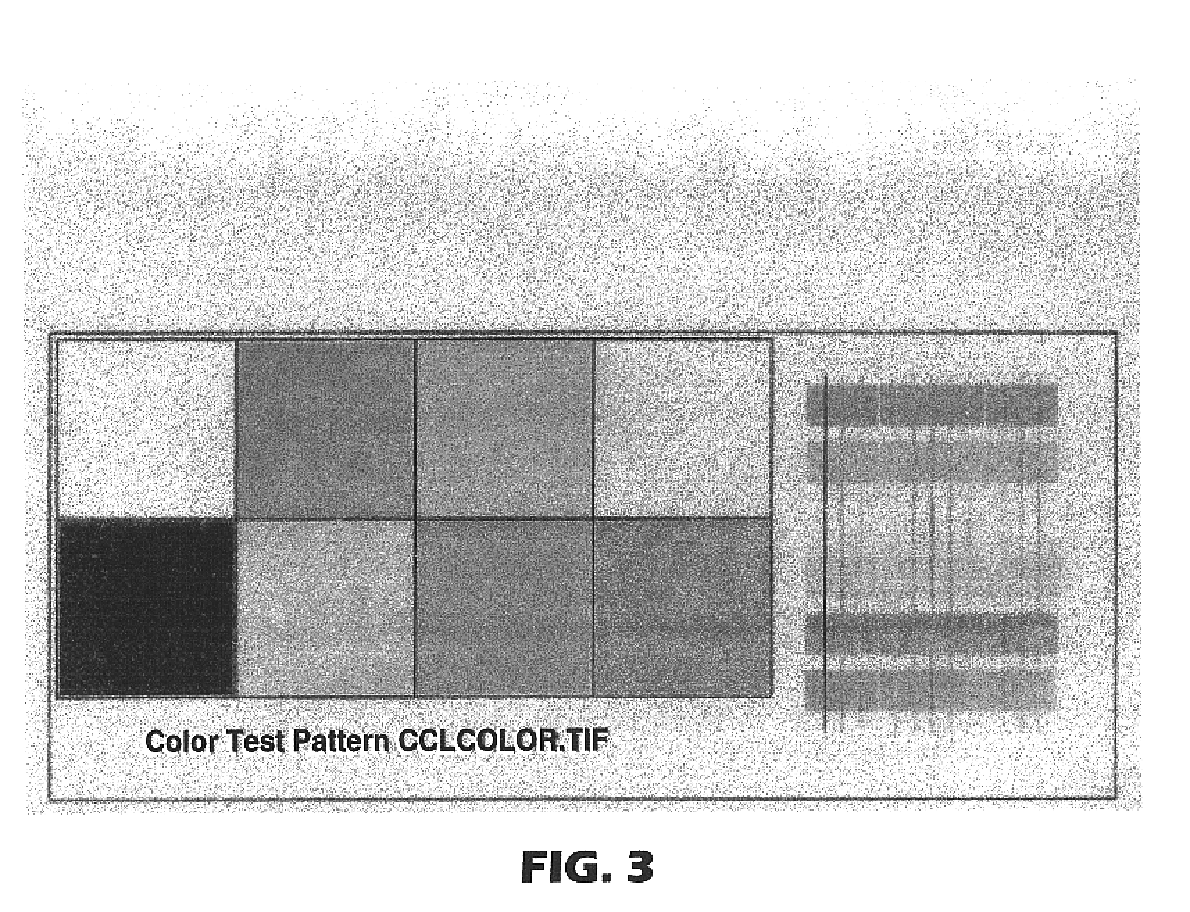Porous inkjet receptor media
a technology of inkjet printing and receptor media, which is applied in the field of porous inkjet printing receptor media, can solve the problems of inability to meet the printing defects of macroporous materials, inability to print inkjet, and difficulty in achieving the effect of high color density, rapid drying time and high resolution
- Summary
- Abstract
- Description
- Claims
- Application Information
AI Technical Summary
Benefits of technology
Problems solved by technology
Method used
Image
Examples
example 1
[0128]A coating solution in accordance with the formula described in the table below was prepared.
[0129]
3.0 partsINF-10(x-PVP particles) 7.0 partsDISPAL 23N4-20(Alumina Sol)10.0 partsIsopropanol80.0 partsWater
[0130]The solution was coated onto a sample of BMF (100 g / m2) nonwoven web material utilizing a #16 Mayer rod. The coating solution was dried in a laboratory oven at 100° C. for 3 minutes.
[0131]After coating, the sample was digitally imaged utilizing a Hewlett Packard HP-855c inkjet printer operating at 360 dpi. Good image quality was observed.
[0132]The printed image was evaluated as in the above examples. The qualitative results are displayed in Table 1.
[0133]When this sample was evaluated for waterfastness, very good results were obtained. The imaged sample produced and left to stand for about 1 hour was washed under a stream of deionized water for about 5 minutes. Essentially no colorant (dye) moved from the initial image, as determined from inspection of the target resolut...
example 2
[0134]A coating solution in accordance with the formula described in the table below was prepared.
[0135]
3.0 partsINF-10(x-PVP particles)6.5 partsDISPAL 23N4-20(Alumina Sol)0.5 partsFLUORAD FC-754(surfactant)10.0 parts Isopropanol80.0 parts Water
[0136]The solution was coated onto a sample of BMF (100 g / m2) nonwoven web material utilizing a #16 Mayer rod. The coating solution was dried in a laboratory oven at 100° C. for 3 minutes.
[0137]After coating, the sample was digitally imaged utilizing a Hewlett Packard HP-855c inkjet printer operating at 360 dpi. Good image quality was observed.
[0138]The printed image was evaluated as in the above examples. The qualitative results are displayed in Table 1.
[0139]When this sample was evaluated for waterfastness, very good results were obtained. The imaged sample produced and left to stand for about 1 hour was washed under a stream of deionized water for about 5 minutes. Essentially no colorant (dye) moved from the initial image, as determined fr...
example 3
[0140]A coating solution in accordance with the formula described in the table below was prepared.
[0141]
3.0 partsINF-10(x-PVP particles)6.5 partsDISPAL 23N4-20(Alumina Sol)0.5 partsFLUORAD FC-754(surfactant)10.0 parts Isopropanol80.0 parts Water
[0142]The solution was coated onto a sample of REEMAY type 6120 polyester nonwoven web material utilizing a #16 Mayer rod. The coating solution was dried in a laboratory oven at 100° C. for 3 minutes.
[0143]After coating, the sample was digitally imaged utilizing a Hewlett Packard HP-855c inkjet printer operating at 360 dpi. Excellent image quality was obtained, whereas this uncoated nonwoven gave results similar to the BMF web of Comparative Example 1.
[0144]The printed image was evaluated as in the above examples. The qualitative results are displayed in Table 1.
PUM
| Property | Measurement | Unit |
|---|---|---|
| Fraction | aaaaa | aaaaa |
| Fraction | aaaaa | aaaaa |
| Fraction | aaaaa | aaaaa |
Abstract
Description
Claims
Application Information
 Login to View More
Login to View More - R&D
- Intellectual Property
- Life Sciences
- Materials
- Tech Scout
- Unparalleled Data Quality
- Higher Quality Content
- 60% Fewer Hallucinations
Browse by: Latest US Patents, China's latest patents, Technical Efficacy Thesaurus, Application Domain, Technology Topic, Popular Technical Reports.
© 2025 PatSnap. All rights reserved.Legal|Privacy policy|Modern Slavery Act Transparency Statement|Sitemap|About US| Contact US: help@patsnap.com



